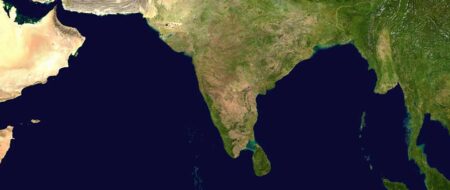Charting Pakistan’s Path to Inclusive Development: Strategies for Bridging the Infrastructure Gap in a Global Context
In today’s globally interconnected landscape, the divide between affluent and struggling nations continues to widen, posing formidable challenges for countries like Pakistan. As rising food prices, soaring fuel expenses, and the imperative for infrastructure enhancement loom large, Pakistan finds itself confronted with a monumental task. Projections reveal a staggering $15 trillion necessity for global public infrastructure investment by 2044, with Pakistan facing a daunting $124 billion infrastructure deficit over the next two decades.
This essay endeavors to provide a comprehensive examination of Pakistan’s infrastructure challenges and its quest to mobilize essential investments across critical sectors amidst prevailing global economic inequalities. This discourse presents a range of strategic solutions while emphasizing the urgent imperative of sustainable infrastructure development to address pressing concerns, such as surging food and fuel costs, alongside climate-induced disasters. These solutions include the introduction of a national emergency framework, alignment of developmental needs through integrated national planning, leveraging multilateral cooperation, embracing green financing, and optimizing organizational synergy through the concept of a ‘super ministry’.
Through these proposed strategies, this essay aims to offer pragmatic avenues for Pakistan to navigate and overcome its infrastructure challenges.
An Array of Daunting Challenges
Economic Disparity and Its Implications: The growing chasm between affluent and impoverished nations exacerbates the challenges countries such as Pakistan face. As wealth concentrates in a few hands, resources become scarcer for those struggling to meet basic needs. The repercussions are felt acutely in Pakistan, where escalating food prices strain household budgets, and soaring fuel costs cripple transportation and industry. Furthermore, the adverse effects of climate change, manifested in natural calamities like earthquakes and floods, exacerbate the urgency of infrastructure development to enhance resilience and adaptability.
The Infrastructure Dilemma: Pakistan’s infrastructure deficit is not merely a matter of convenience but a pressing economic and social imperative. Inadequate energy infrastructure stifles industrial growth and impedes access to electricity for millions. Similarly, deficient telecommunications networks hamper connectivity and limit access to vital services, hindering economic participation and development. Moreover, the country’s highways, vital for trade and transportation, require substantial upgrades to facilitate the efficient movement of goods and people. The security concerns further complicate the picture.
Challenges in Mobilizing Investments: Securing the necessary investments to address Pakistan’s infrastructure needs is fraught with challenges. The country’s limited fiscal capacity and high debt burden constrain public spending on infrastructure projects. Additionally, the volatile geopolitical landscape and persistent security concerns deter foreign investors, further narrowing financing options. Moreover, the worsening economic conditions in many developing nations, exacerbated by the Covid-19 pandemic, exacerbate Pakistan’s struggle to attract investments.
Potential Strategies for Bridging the Gap
Despite the intimidating challenges, several strategies could help Pakistan mobilize the required investments for infrastructure development:
- Introduction of National Emergency Framework: Introducing a national emergency framework for high-priority developmental projects across Pakistan holds significant promise in accelerating infrastructure development and overcoming persistent hurdles such as land ownership disputes, security concerns, and bureaucratic delays. This will also ensure time-cost control of each such vital project. Under this concept, the federal government should wield its authority to declare a national emergency for selected projects, empowering the Planning Commission of Pakistan to expedite approvals and streamline processes, bypassing traditional bureaucratic channels. By adopting a “whole-of-nation” approach, this initiative would prioritize the nation’s most pressing infrastructure needs, ensuring swift action and efficient resource allocation. To address existing projects, parliamentary legislation should be enacted, listing approved initiatives under the emergency framework, thereby facilitating their expedited implementation. This approach represents a proactive and pragmatic strategy to catalyze development, stimulate economic growth, and enhance Pakistan’s competitiveness on the global stage.
- Aligning Developmental Needs through Integrated National Planning: The Pakistan Vision 2025 serves as a guiding beacon, emphasizing the paramount importance of ensuring the reliable, clean, and cost-effective availability of essential resources such as energy, water, and food to propel sustainable progress. However, the nation faces persistent challenges in harmonizing federal and provincial development plans, resulting in delays in fund disbursement and inefficiencies in resource allocation. It is imperative for the Planning Commission to assume the role of custodian of a comprehensive national development framework (NDF) to address these complexities. This NDF should encompass various components, including the Public Sector Development Program (PSDP), non-PSDP initiatives, public-private partnership (P3) projects, PSDP Plus endeavors, and provincial annual development plans. Moreover, the establishment of a national command and development center within the Planning Commission, equipped with inputs from all stakeholders and advanced monitoring mechanisms like satellite imaging from SUPARCO, could ensure timely oversight and implementation of national projects, thereby fostering efficient and impactful developmental outcomes for Pakistan.
- Leveraging Multilateral Cooperation: Strengthening ties with international financial institutions and fostering partnerships with donor countries represent pivotal strategies for Pakistan to access concessional financing and technical assistance crucial for advancing critical infrastructure projects. By deepening engagement with institutions like the World Bank, Asian Development Bank, and International Monetary Fund, Pakistan can tap into a wealth of resources and expertise tailored to its developmental needs. Moreover, forging robust partnerships with donor nations opens avenues for bilateral assistance and investment, further bolstering the nation’s infrastructure endeavors.
- Green Financing: Embracing sustainable infrastructure projects aligned with climate goals is not just a responsibility but a critical opportunity for nations to secure green financing and international support while fortifying environmental resilience. By prioritizing initiatives that reduce carbon emissions, enhance energy efficiency, and promote renewable energy sources, countries can attract a wealth of green financing options from both the public and private sectors. These investments not only drive economic growth but also contribute to mitigating the impacts of climate change and building a more sustainable future for generations to come. With the global community increasingly recognizing the urgency of climate action, embracing green financing mechanisms represents a proactive step towards achieving climate resilience and sustainable development goals.
- Optimizing Organizational Synergy – Super Ministry: The requirement for synergizing various organizations with overlapping roles in development is paramount for streamlining efforts, avoiding duplication, and maximizing efficiency in achieving national development objectives. Currently, the China-Pakistan Economic Corridor (CPEC) operates under the auspices of the Planning Commission, focusing on large-scale infrastructure and energy projects aimed at enhancing connectivity and economic growth. On the other hand, the Special Economic Zones (SEZs) new initiatives like the Strategic Investment Facilitation Council (SIFC) work through the Board of Investment (BOI), primarily tasked with attracting foreign investment and facilitating industrial development within designated sectors/zones. The Chinese development model offers valuable insights into the evolution of economic planning and management systems to adapt to changing socio-economic dynamics. The establishment of the State Planning Commission in 1952 marked a pivotal moment in centralizing economic planning efforts in China. However, as the country transitioned from a command economy to a socialist market economy in the late 1990s, the need arose for a more nuanced approach to economic governance. In response, the National Development and Reform Commission (NDRC) was launched in 1998, tasked with coordinating macroeconomic and microeconomic affairs, fostering a competitive yet equitable market environment, and formulating national development strategies. Endowed with extensive authority and oversight from the State Council, the NDRC operates as a ‘super ministry’, wielding influence over medium- to long-term economic planning, foreign investment approval, and coordination of various development policies. Notably, the NDRC’s emphasis on environmentally sustainable growth, equitable wealth distribution, and stimulating domestic consumption, as evident in initiatives like the 12th Five-Year Plan, underscores China’s commitment to balanced and inclusive development paradigms. Pakistan needs to modify such governance mechanisms to remain aligned with best practices.
Conclusion
Addressing Pakistan’s infrastructure deficit amidst widening global economic disparities requires bold and concerted efforts from policymakers, investors, and international partners. By adopting a multifaceted approach encompassing innovative financing mechanisms, institutional reforms, and sustainable development strategies, Pakistan can surmount the formidable challenges and pave the way for inclusive growth, resilience, and prosperity in the years ahead.
Muhammad Jawad Akhtar is a former advisor/senior specialist CPEC/Ministry of Planning, Development & Special Initiatives. He can be reached at jawad_jd@yahoo.com.













Leave a Reply